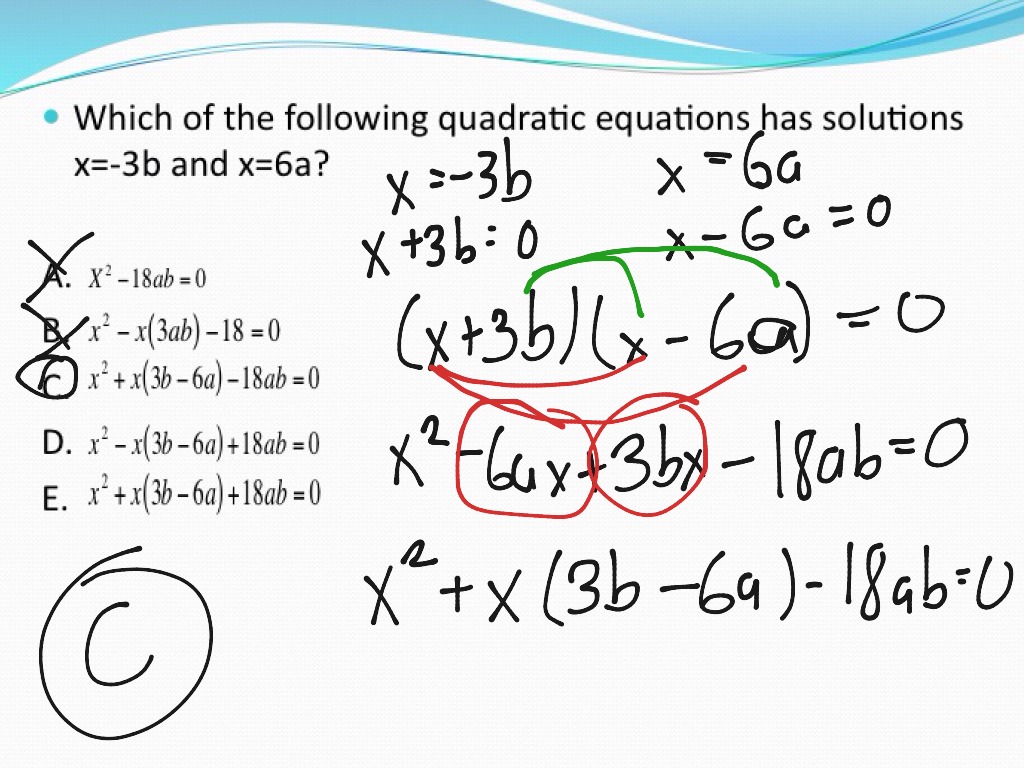


Writing the quadratic in this way is known as factorising the quadratic or simply factorisation because it involves finding the factors of the quadratic expression.įor example, factorising the left hand side of the quadratic equation $x^2+(r+s)x+rs=0$ gives $(x+r)(x+s)$. In some cases it is possible to write the quadratic expression on the left-hand side of a quadratic equation as a product of two linear expressions each enclosed in a pair of brackets. There are two commonly-used methods of solving quadratic equations: factorisation and the quadratic formula. The solutions of a quadratic equation correspond to the roots of a quadratic function. Quadratic equations can have two, one or no real solutions. These values of $x$ are called the solutions to the quadratic equation. Solving a quadratic equation means finding values of $x$ which satisfy the equation (make the expression on the left-hand side of the $=$ sign equal to zero). In other words, it is an equation where the highest power of the variable (usually $x$) is $2$. Contents Toggle Main Menu 1 Quadratic Equations 2 Factorisation 2.1 Method: when $a eq1$ 2.2 Video Example 3 The Quadratic Formula 4 Simultaneous Quadratic Equations 5 Quadratic Functions 6 Cubic Functions 7 Workbook 8 Test Yourself 9 External Resources Quadratic EquationsĪ quadratic equation is an equation of the general form \ where $a\neq 0$ where $x$ is a variable and $a,b$ and $c$ are constants.


 0 kommentar(er)
0 kommentar(er)
